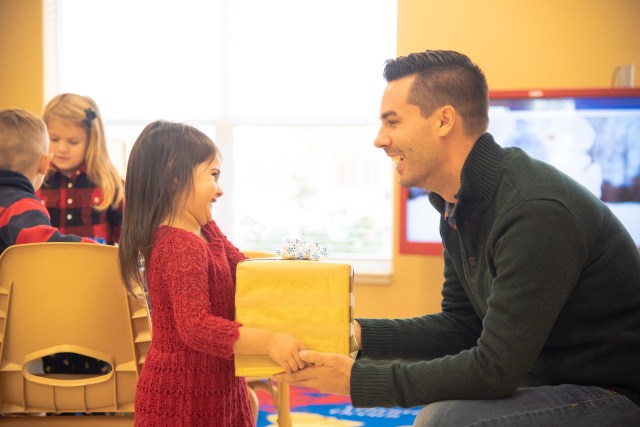The season of giving is here, but it’s essential to teach your children gratitude every day. How do we teach such an abstract concept to a developing brain? By incorporating some unexpected and quick practices into our daily routine.
1. Show Your Kids How to Be Grateful
Children may not love to be told what to do, but they do love to mimic everything around them. Instead of instructing your child to be grateful, show them through your actions and words. Thank your children, say please and excuse me when necessary, and talk about your appreciation for when they or other family members do something of note. Incorporate it into a game like “Freeze Dance” to subtly drive the message home. Play some music and have the children dance. Stop the music at different times, and tell the children to “Freeze.” While they are frozen, have the children name what they are thankful for when you point at them, trying not to repeat any answers. Make sure that everyone gets a turn to share one or two things for which they are thankful.
2. Offer to Help
It’s not often we have time to spend the day volunteering, so simple helpful gestures for others are a great way to show children kindness and gratitude. Encourage your child to help you hold open the door for others, ask someone if they need help carrying their groceries and return a wallet left in the parking lot, especially when little eyes are on us. Make sure to narrate your helpfulness and gratitude when your child is with you. “Let’s hold the door open for this lady behind us,” or “wasn’t it nice that this man helped us carrying our dry cleaning to the car?”
3. Stop & Smell the Apple Pie
Have you stopped recently to enjoy the feel of the warm sun on your face or looked closely at the way a leaf flutters softly to the ground? Taking a moment to admire the little things around us, and pointing them out to our children, shows them that nothing is too small to be appreciated.
4. Practice Positivity
Sometimes all it takes is a positive attitude and a smile to make ourselves feel more grateful for our circumstances. It’s possible to teach our children that it’s okay to have a bad day or emotion, and to also help them look at the bright side by being thankful for the good. Playing the silver lining game at dinnertime can help us address the highs and lows of our day so we can appreciate the good stuff. Ask each member of the family to identify his or her best and not-so-best moment of the day to help each other see how the good usually outweighs the bad.
5. Give When You Receive
Being grateful can be difficult when children are over inundated with toys. Occasionally, it’s a good idea to help your child choose toys they no longer want and give those to other children in need. Something like a one-toy-in and one-toy-out policy can empower our children to give to others when a toy is no longer being used.
6. Display a Thankful Board
Children are visual and love seeing their creations and successes hung on the refrigerator or family bulletin board. Create a space for a family gratitude board on which to post notes of appreciation for each other or for things that make them feel grateful, as a regular reminder.
Sometimes all it takes is a couple of subtle routine changes to establish gratitude habits that will help your child’s character development. If you run out of ideas or want to practice other key character traits, head over to Kiddie Academy’s website to download the Character Essentials Activity Book.
Addition Reading Recommendations:
I’m Feeling Thankful (Daniel Tiger’s Neighborhood), Natalie Shaw
Please, Mr. Panda, Steve Antony
Thanks From the Very Hungry Caterpillar, Eric Carle
Let’s Be Thankful by P. K. Hallinan,
Look and Be Grateful, Tomie dePaola
The Most Thankful Thing, Lisa McCourt
—Joy Turner, The Kiddie Academy
